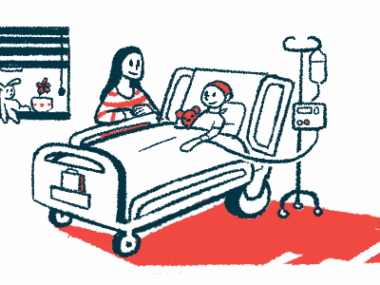Anesthesia Safely Used 3 Times in Boy, Now 6, With AADC: Case Study
Written by |

Three rounds of anesthesia — two in infancy and the latest at age 6 — were conducted safely and without incident in a boy with aromatic l-amino acid decarboxylase (AADC) deficiency, according to a recent case report.
While the results highlight that anesthesia can be successfully administered to pediatric patients with AADC deficiency, the research team noted that several precautions were taken to ensure the boy’s safety. Similar measures should also be considered by other clinicians using anesthesia in children, the report suggests.
“In this report, we describe the precautions taken in this case, and discuss the provision of general anaesthesia for children with rare neurometabolic disorders,” the researchers wrote.
The case report, “Anaesthesia management of a child with aromatic L-amino acid decarboxylase deficiency,” was published in Anaesthesia Reports.
AADC deficiency is an extremely rare genetic disorder characterized by impaired production of several of the brain’s neurotransmitters — the chemicals that nerve cells use to communicate.
The lack of these neurotransmitters leads to symptoms of developmental delay, lack of muscle tone, movement disorders, and autonomic dysfunction. Autonomic impairments are disturbances in parts of the nervous system responsible for uncontrollable bodily functions such as blood pressure and breathing.
Anesthesia interferes with nerve signals so that a person does not feel pain during surgery or medical procedures. In patients with AADC deficiency, anesthesia can cause abnormal blood pressure and heart rate, also called hemodynamic instability, which poses a significant safety concern. Declines in blood sugar, called hypoglycemia, also are a concern.
AADC-deficient patients also may be particularly sensitive to some inotropic interventions, which are aimed at normalizing hemodynamic instability, leading to a dangerously low heart rate. Meanwhile, other interventions may be entirely ineffective.
Altogether, this means that these patients likely need close monitoring and care during anesthesia. However, due to the condition’s rarity, few studies have evaluated anesthesia management in AADC-deficient patients.
Now, a research duo from Ireland reported the case of a male patient who was diagnosed with likely AADC deficiency at the age of 5 months. The infant had developmental delay, abnormal eye movements, and undetectable levels of neurotransmitters in his cerebrospinal fluid, which is the liquid surrounding the brain and spinal cord.
The boy underwent two procedures requiring anesthesia in his first year — an MRI at 5 months, and the insertion of a feeding tube at age 1. Both times, the boy was given the anesthetic propofol without incident or need for medicines (inotropic support) to help stabilize blood flow and optimize oxygen supply.
The third and most recent surgery was performed when the boy was 6. He required an exam of his gastrointestinal tract (endoscopy) due to bloody stools, with a suspected case of inflammatory bowel disease (IBD).
Given the potential risks, “before scheduling this child for theatre [surgery], a multidisciplinary team meeting was conducted with input from his primary paediatrician, neurologist, gastroenterologist and anaesthetist to discuss the risks and benefits of endoscopy under general anaesthesia,” the researchers wrote.
“These risks were also discussed thoroughly with his mother who consented to the procedure,” they noted.
In the hospital, it was now observed that the boy experienced profound developmental delay and hypotonia. The team noted that he had been admitted to the hospital several times in the previous year due to involuntary muscle movements and infections.
Before surgery, heart function and other lab tests appeared normal. The boy required some oxygen at night, but his breathing was not significantly interrupted.
The child was given all of his usual medications before surgery to avoid a worsening of symptoms during or after the procedure.
Propofol anesthesia was administered, followed by atropine, a medication intended to prevent hemodynamic instability. A breathing tube was inserted to keep the airways open while the boy was unconscious, and a heated blanket and glucose infusions helped maintain normal temperature and blood sugar, respectively.
At the start of the procedure, the boy exhibited a slightly elevated heart rate, the researchers noted, but the procedure was otherwise uneventful, with no signs of IBD observed. After a hospital stay that did not require invasive monitoring, the child was discharged.
“This case, together with the two anaesthetics provided in infancy, demonstrates safe general anaesthesia in a child with AADC deficiency using a [propofol infusion] technique. Specific haemodynamic and autonomic considerations should be observed for patients with this rare condition,” the researchers concluded.






